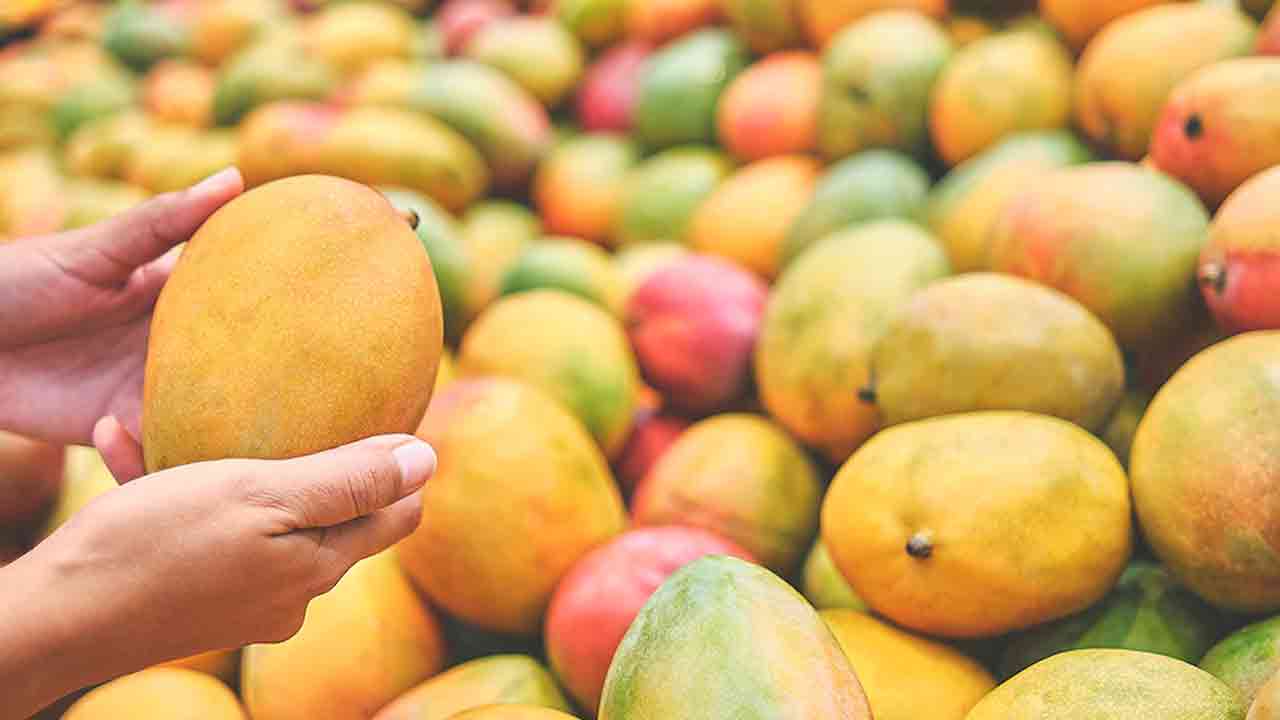

Real Mango vs False Mango: Mangoes are easily one of the most popular fruits, especially during the summer months. But with the increasing demand, sellers have a tendency to employ artificial ripening methods with chemicals, and thus it becomes impossible to identify naturally ripened mangoes and chemically treated ones. Artificially ripened mangoes are not good for health, and thus it is important to recognize authentic mangoes at home. Listed below are a few tips that may be extremely simple but helpful in distinguishing between authentic and fake mangoes.
Seasonally ripened mangoes will generally be of the same size based on their type, i.e., oval or kidney shape. But chemically treated mangoes appear irregularly larger or deformed as they are watered or artificially treated to make them larger.
Natural mangoes are multi-coloured ranging from yellow, orange, red, or green depending on the type and ripeness. Artificially ripened mangoes normally present with a vivid, even hue together with an artificial shine, sometimes due to wax or chemical coating.
A naturally ripe mango emits a sweet, tropical fragrance, especially in and around the stem region. If a mango lacks this smell or a chemical smell, it most likely is treated with artificial ripening chemicals such as calcium carbide, which does not allow natural aroma to develop.
Gently pressed, a just-picked mango will be firm on the stem but soft elsewhere. A chemically ripened mango will be uncharacteristically hard with no give or too mushy from unbalanced ripening.
A natural mango will have a tiny, dry stem, while artificially treated mangoes will have fatter or glossy stems, which indicate chemical tampering.
Place the mango in a water bowl. Real mangoes will sink, but chemically treated ones float due to heightened water absorption.
Also Read: Is it Safe to eat Mangoes during Rainy Season? Health Risks and Precautions Explained
By using these simple identification techniques, you can be sure that the mangoes you consume are naturally ripe and healthy. Purchase mangoes only from reliable sources and refrain from consuming mangoes with unnatural shine, chemical odour, or uneven texture in a bid to experience the true taste of this seasonal fruit!